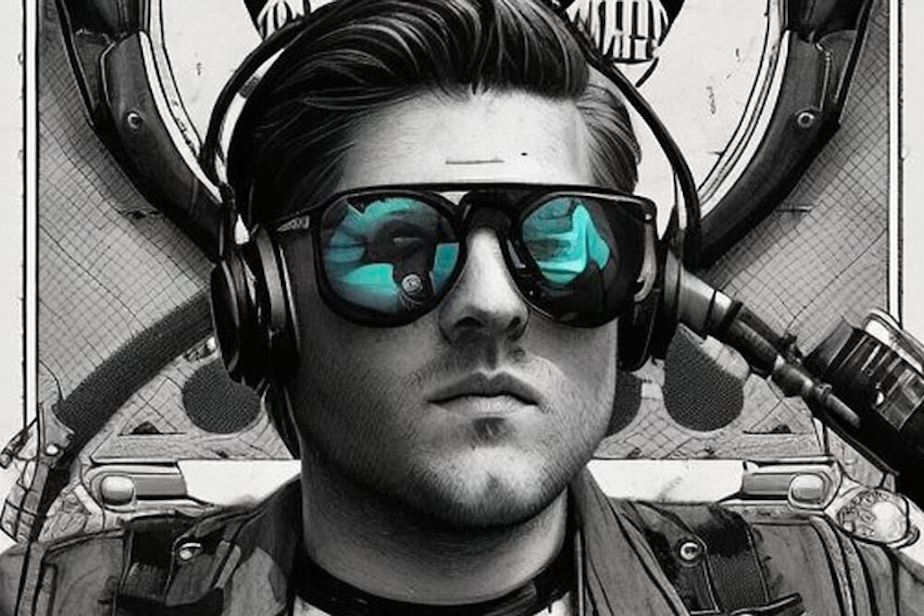Is there AI in your art?: Today So Far

- A recent Consumer Reports assessment found high levels of toxic heavy metals in popular chocolate bars.
- Air India's recent Boeing purchase has gotten a lot of attention, and for a good reason.
- Where is the line between original work and AI art?
This post originally appeared in KUOW's Today So Far newsletter for February 21, 2023.
A recent Consumer Reports assessment found high levels of toxic heavy metals in popular chocolate bars. Two products on the heavy metal list come from Seattle company Theo Chocolates.
Before you get depressed over the cruel world taking chocolate away from you (and in turn reach for something else that probably isn't healthy, either), a UW Medicine dietitian tells KUOW that there is no reason to freak out.
“I would say, especially for pregnant women and children, probably not more than an ounce a day of dark chocolate of these ones that are found to have a little bit higher levels of lead and cadmium," Judy Simon said. "These heavy metals are ubiquitous, they're in the air, they're in the soil."
In other words, don't gorge for hours on chocolate. Just have a small treat. Such moderation is probably good advice for most (guilty) pleasures in life — sweets, beer, Maury Povich, social media, orange mocha frappuccinos and gasoline fights.
The heavy metals that Consumer Reports found in 28 products were lead and cadmium, which in large amounts and over time can be harmful to people. It's written a letter to various companies asking them to address the issue. Read the full story here.
Air India's recent Boeing purchase has gotten a lot of attention, and for a good reason. Boeing has had a hard time in recent years, with federal investigations and software problems. The company was laying off workers even before pandemic slowdowns.
So the sale of 737 MAXs, 787 Dreamliners, and 777X jets is great news for the company. In total, Air India ordered 290 Boeing jets. The order will support more than 1 million jobs. Read the full story here.
In the world of Star Trek, there are holodecks — rooms that create a holographic world that people can interact with. In this futuristic version of storytelling, people don't often read books, watch movies, or play video games. Instead, they actively take part in a story, moving through holographic versions of Sherlock Holmes mysteries, catching a crooner's concert at a Las Vegas lounge, or just hanging out in a small Irish town with quirky locals. Someone wrote these "stories," but the computer has to take over to make them happen, adapt to the real people, adjust plots, introduce new characters, and so forth. So who is actually writing these futuristic tales? The human or the AI? Star Trek once got even more complex when a ship's holographic doctor grew beyond its program and wrote a story on its own. But future publishers refused to acknowledge any rights to the story because they did not consider a hologram, an AI, a real person.
These sci-fi scenarios were written for TV back in the 1990s, and take place a few hundred years from now. But in reality, these questions and ethical issues are happening right now. AI is getting artistic.
KUOW arts reporter Mike Davis has taken a look under the hood of a few creative artists who incorporate AI into their work, starting with Karl Stedman. He isn't an author. At least, he wasn't an author. All it took was seven hours and ChatGPT and he is now published. Unlike countless writers who struggle over pages and plot points for months to years, Stedman used AI to assist with the writing, and then further used AI to illustrate the book. The first story is about AI tech on a spaceship that desires to make its own decisions, so it rebels against the human crew.
Stedman has since "written" two other books called "Apocalyptic Humor" using the same AI methods. In the online description for "Apocalyptic Humor," he notes that it was written and illustrated by AI, and "curated by a human."
Unlike Stedman who used ChatGPT, poet Arlene Kim used her own work as the basis for a program which she calls an "echo version" of herself. It only has Kim's previous creativity to work from. It then uses her words to create new poetry. This is quite different than a program like ChatGPT, but again brings up the question: Who gets credit for the work? Check out the full story here.
AS SEEN ON KUOW

Four members of Seattle Pacific University's board of trustees have asked a judge to throw out the case against them. A lawsuit accuses the four trustees of causing harm to SPU by not allowing the school to hire LGBTQ employees. The trustees argue that this case is asking a judge to "referee a religious debate." (Associated Press)
DID YOU KNOW?
Lead and cadmium are common metals in the environment, and therefore show up in many foods. That doesn't mean they are OK to consume all the time. The health risks of lead have been well-known for years now. It's why we get those pamphlets every time we move into an old apartment building telling us not to eat paint chips off the walls.
Cadmium is not as commonly discussed. This metal is similar to mercury and zinc. It has been used as a plating for steel, for adding color to glass, in the construction of TVs, and for batteries, to name a few uses. Today, it is more likely to be used in the production of solar panels or semiconductors. Despite its toxic side effects, it has also been used in some cancer treatments, yet high exposure to it has also been linked to certain forms of cancer.
ALSO ON OUR MINDS

Changes to new editions of Roald Dahl books have readers up in arms
New editions of works by children's author Roald Dahl are being edited to remove words that could be deemed offensive to some readers. The publisher of Dahl's books has made hundreds of changes to original texts of books, such as "Charlie and the Chocolate Factory," "Matilda," "James and the Giant Peach" and "Fantastic Mr. Fox." The move has prompted some to criticize it as censorship.

